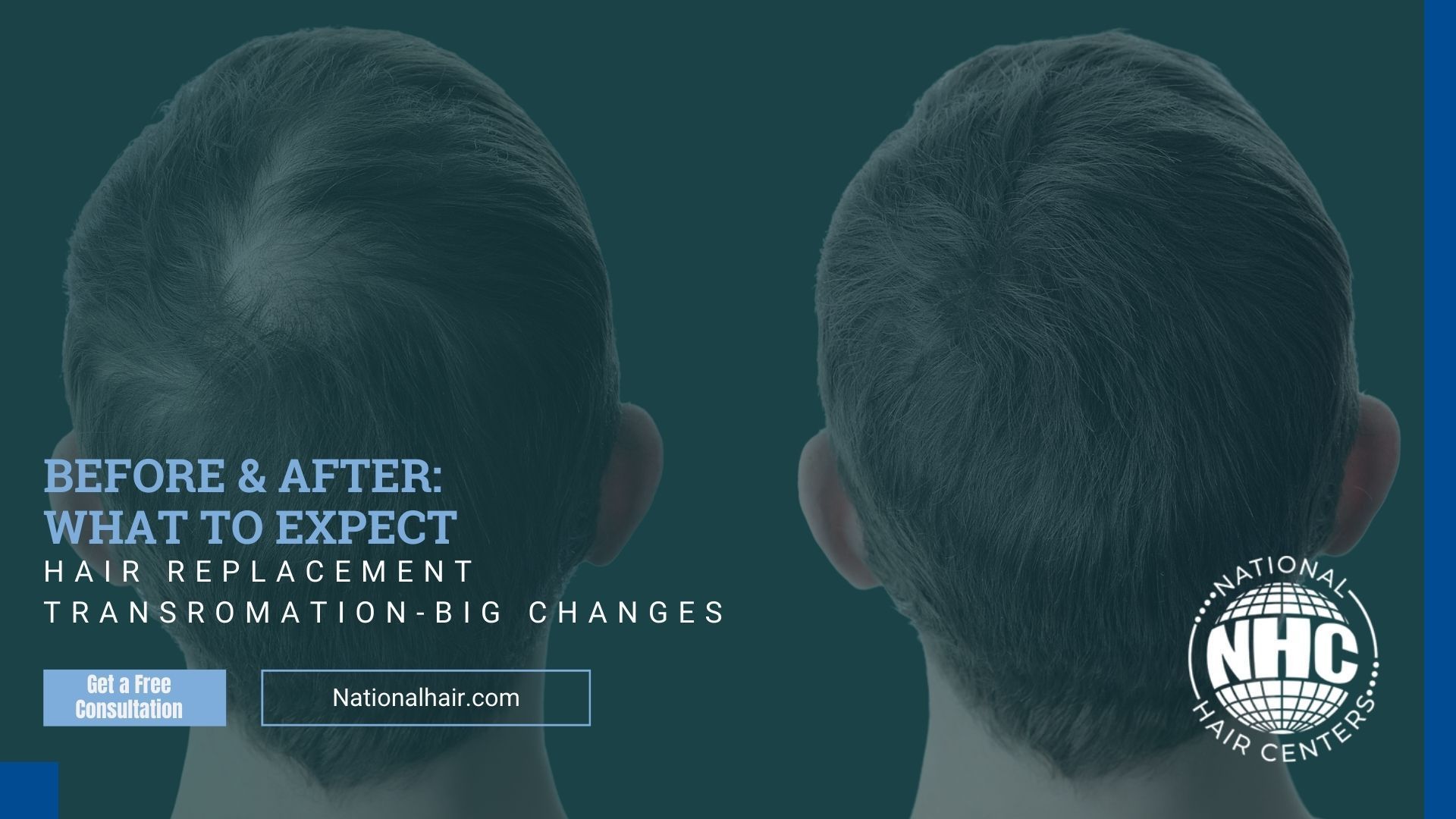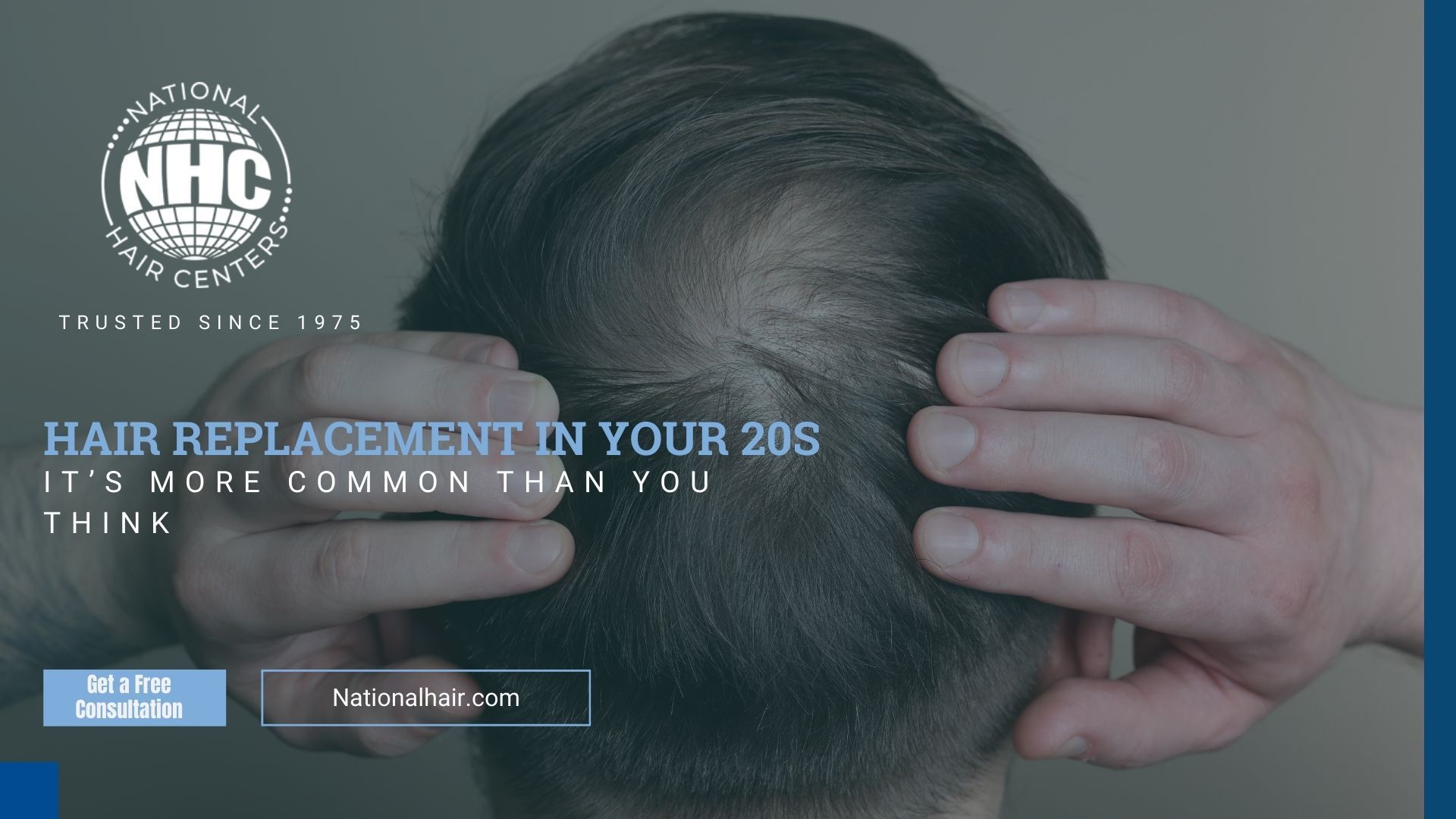Wigs vs. Hair Systems: A Closer Look
We see an equal number of men and women at National Hair Centers and the proportion of clients that are women has grown in recent few years. One reason is that we now live in the “information age” and one can simply go on the internet to find out how others are dealing with their hair loss. There is comfort in knowing that “you’re not suffering alone.” Not only do thousands of others suffer from the same circumstances, but there are viable solutions readily available.
Wig and Hairpiece: What’s the Difference?
There are both subtle and significant differences between wig and toupee (another word for hairpiece), so let’s take a minute to explore them.
Wear a Wig
A wig is a head of hair that can be made from horsehair, human hair, wool, yak hair, buffalo hair, or synthetic materials; worn on the head for fashion or various other aesthetic and style reasons, including cultural and religious observance. The word wig is short for periwig which first appeared in the English language around 1675.
Some people wear wigs to disguise the fact that they are bald or for other cosmetic reasons, sometimes in the context of the religious practice of cutting or shaving one’s natural hair.
Ancient Use of Wigs
The ancient Egyptians wore wigs to shield their shaved, hairless heads from the sun. They also wore the wigs on top of their hair using beeswax and resin to keep the wigs in place. Other ancient cultures, including the Assyrians, Phoenicians, Greeks, and Romans, also used wigs as an everyday fashion.
Their popularity grew in the 16th century as a means of compensating for hair loss or improving one’s personal appearance. They also served a practical purpose: the unhygienic conditions of the time meant that hair attracted head lice, a problem that could be much reduced if natural hair were shaved and replaced with a more easily de-loused hairpiece.
Wearing a Hairpiece
A hairpiece, often known as a toupée (pronounced too-pay from the French toupet meaning diminutive top,) or “partial” wig of natural or synthetic hair is worn to cover partial baldness. Whiletoupées and hairpieces are typically associated with male wearers, most people aren’t aware that more than 50% of women suffer “pattern baldness” and other general hair loss conditions. Therefore, women also use hair pieces as a solution to lengthen existing hair or cover a partially exposed scalp.
How to Wear a Hairpiece
Women who come to National Hair Centers generally want anything but the “wig(s)” they have been using for years once they realize that there are better alternatives.
Major differences between hair pieces and wigs include:
- Comfort
- Hairpieces are usually designed specifically for you so they fit impeccably
- Breathability
- Covering only a portion of your head vs. all of it naturally improves the air flow around and underneath your hair making it cooler
- Communion with your own body
- Unlike a wig, a hairpiece becomes a part of you and moves or flows naturally with your body movements and makes you forget that you’re even wearing it Integration with your lifestyle
- Your hairpiece (hair system as it’s known today) allows you to maintain your active existing lifestyle.
Wearing a Hairpiece… The Ultimate Test
The ultimate test for one female client was that she can scuba dive in her hairpiece. She was never able to do that in a wig and therefore limited her lifestyle because she didn’t want to remove her wig and display her hair loss problem to the world prior to entering the water.
If your lifestyle is cramped by your hair loss issue, National Hair Centers is a great place to start. With America’s largest single hair restoration facility and over 40 years’ experience, we have all the potential hair loss solutions for you to explore.
Information is power… so start with the facts TODAY!











